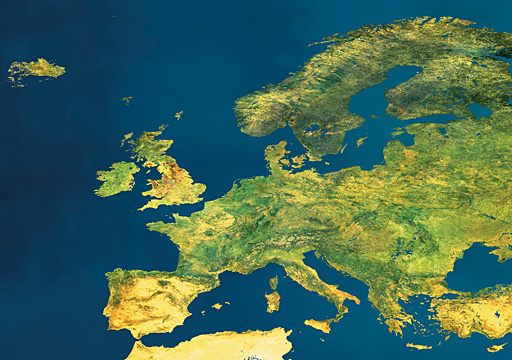Welcome, Wilkommen, Welkom, Bienvenue, Bienvenido, Välkommen, Benvenuto to:
www.1europe.eu
On this website you can find a description of each of the 27 members of
1 Europe. Here you get the answers to your questions, for example: how many people do live in France, what is the GDP per Capita and what are,
for example, the business habits of Poland.
If you want to know more about the very interesting emerging ‘European Union’
you are at the right place on www.1europe.eu !
The motto of the European Union is: ‘In varietate concordia’ Latin for ‘united in diversity’ and
the EU sure is with it’s 494 million citizens and more over than 150 cultural backgrounds.
The 'lady bug
picture' in the head of each page, is representing the six countries (six
dots) who were involved in creating the European Union, as we know today.
They made it possible to climbing up the leave and evolving One Europe to be
more peacefull and harmonious. The black space in the picture stands for a
timeline, we are just at the beginning to evolve to a bigger part. We now all stand together with our great
cultures and ideas and heading up for very special changes in the coming
era's. So Be One Europe and Think One Europe, because now it is about time !

History of the European Union
The EU has evolved from a Westen European trade body into the supranational and intergovernmental that is is today. After the
Second World War, an impetus grew in Western Europe for institutional forms of
coöperation (through social, political and economic integration) between states, driven by the determination to rebuild Europe and eliminate the possibility of another World War. Eastern Europe, on the other hand, was largely within the Soviet sphere of influence, and only in the 1990s did the EU see central and Eastern European states as potential members.
In 1946 Winston Churchill called for a 'United States of Europe' (though without the inclusion of the UK). On May
9, 1950 the French foreign minister Robert Schuman presented Jean Monnet's proposal for the joint management of France's and West Germany's coal and steel industries. The proposal, known as the "Schuman Declaration", envisaged the scheme as 'the first concrete step towards a European federation'. It is considered to be the beginning of the creation of what is now the European Union, and led to the formation of the European Coal and Steel Community by West Germany, France, Italy, Belgium, The Netherlands and Luxembourg. This was accomplished by the 'Treaty of Paris', signed in 1951.
The first full customs union - the European Economic Community – (EEC) was established by the Treaty of Rome in 1957 and implemented on 1st January 1958. This
is later changed to the European Community, which is now the "first pillar" of the European Union created by the 'Maastricht Treaty'.
On October
29, 2004, EU member state heads of government and state signed the Treaty establishing a Constitution for Europe. This was later ratified by 17 member states. However, in most cases ratification was based on parliamentary action, rather than popular vote, and the process faltered on May
29, 2005 when French voters rejected the constitution 55% to 45%. The French rejection was followed three days later by a Dutch one, in which 62% of voters rejected the constitution as well.
Currently, EU leaders are working on a new text aimed to fulfill the some of the most central objectives from the rejected constitution in the form of a "simplified treaty".
1 Europe
The European Union (EU)
currently consists of the following 27 Member States:
Austria, Belgium, Bulgaria, Cyprus, Czech
Republic, Denmark, Estonia, Finland, France, Germany, Greece, Hungary, Ireland, Italy, Latvia, Lithuania, Luxembourg, Malta, The Netherlands, Poland, Portugal, Romania, Slovakia, Slovenia, Spain, Sweden and the United Kingdom.
10 Facts of 1 Europe (as per 2008)